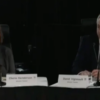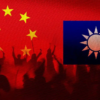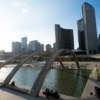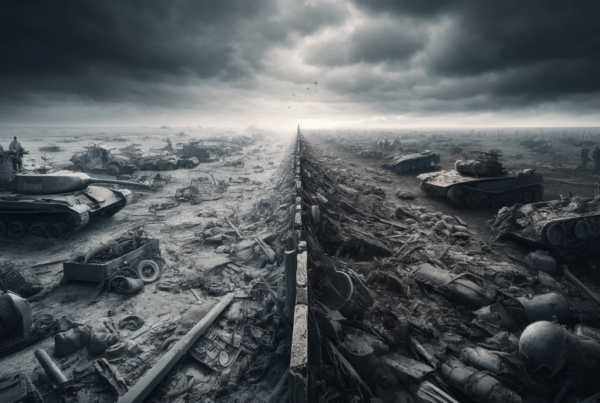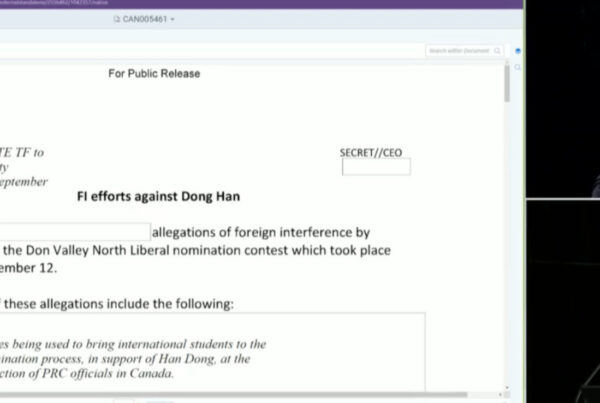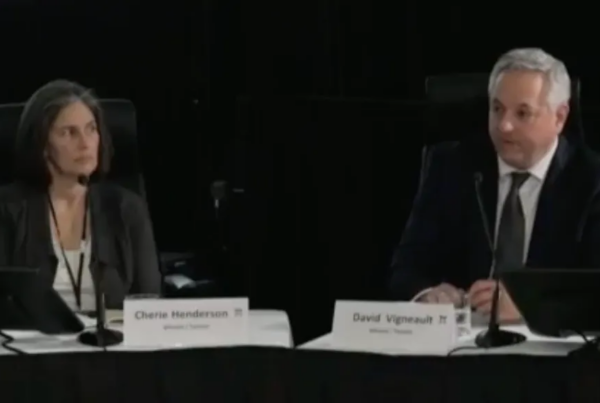In the highly stratified society of Tokugawa Japan, one aspect of life was removed from the rigid class structure. The world of brothels and courtesans was held to be a realm apart from the strict conventions of larger society. This “floating world” cut across the real one. Its rules and proprieties were entirely separate, yet it wove through daily life in a number of ways. Everyone in the ordinary scheme of things had access to the floating world, while its regular denizens often ignored the real one.
Most of us tend to think of political and public life as a structured and orderly creation. Countries have borders, customs posts, their own laws and security forces. Binding the world of the nation states and their separate jurisdictions, are conventions of diplomacy, protocol, and a few international laws and agreements. We see the world as one with a lot of fences and barriers – even though our communications and transportation systems have made the world smaller than ever.
Weaving through our world of jurisdictions and countries is an international world. It is mostly inhabited by international agencies, multi-national corporations, non-governmental organizations and a variety of other bodies. Individual denizens of this international world include an equally diverse variety of academics, entrepreneurs, tourists, entertainers and so on. The vast majority of these inhabitants can be safely assumed to be peaceful in purpose and behaviour.
However with the development of this supranational existence, a new “floating world” has already developed and many terrorists belong to it – as do a variety of other actors. In this world, those who are unencumbered by ethics can move much faster than those who are. Money changes hands at the speed of light, while goods and people can fly across the world in a day. The criminal or
terrorist who understands this world is able to stay ahead of the poor plodding police. Within this world are others who can be of use to the crook or insurgent – those bankers, financiers, shipping agents and arms dealers who are not always lawful in their dealings. In some cases, it is even possible for the crook or insurgent to be his own banker or arms dealer. The traffic of the floating world can be complex indeed.
One highly educated RCMP officer who specializes in international financial crime complained to the writer that it was almost impossible for him to understand some transactions of the Russian Mafiya. Even a simple money laundering operation might take investigators months (or years) to unravel between seven transactions and four countries. By the time police can close the operation down, tens of millions of dollars have moved on. Once the operat;on is shut down, another can be opened in days, or even hours if connections have already been made.
Many operations are not so simple. In some cases, three or four other different networks may all be involved. Part of the profits may have been diverted to purchase arms in Europe, property in the US, stocks in Canada, or oil in Russia. All of the criminal groups involved may have their own insurgent allies who protect sanctuary areas or safeguard smuggling routes.
In recent months, Osama bin Laden has made it to the headlines from his earlier obscurity in the depths of features articles in specialist news magazines. As one of the nexus points for a vast network ofIslamic Fundamentalists, bin Laden is another example of the floating world. In the terrorist world, he is nothing special insofar as his violent skills go – gunmen and bombers are plentiful. As a source of ideological inspiration, he is of little account as well. The tenets of his violent version of Islam did not originate with him and will survive his death or capture.
What makes bin Laden special is his connection to the floating world – he and other enormously rich sponsors of the Fundamental ist network are part of the transnational corporate and financial spheres. As the US is now finding, it is almost impossible to locate his money through a maze of numbered shell cotnpanies in different jurisdictions. For those who are armed and equipped with that money, it is no great problem to be one month in New York City, another in the Philippines, another in Pakistan and another in Kenya. Money makes other resources available; IDs, passports, detonators, or phony credit cards.
Only through enormous effort and considerable cooperation can the police forces of some 20-30 nations hope to deal with this floating network. Often, cooperation comes after tragedy, when the far off and exotic nature of religious zealots in Afghanistan and the Sudan translates into truck bombs and shootings in the streets of Europe and North America.
Another example of operations in the floating world comes from the Liberation Tigers of Tamil Eelam (LTTE). This Sri Lankan guerrilla force has organized its largely criminal fundraising activities on a global scale. They have intimidated law enforcement authorities on four continents with the ferocity and volume of their deeds- and their rapid acquisition of political connections. Lacing all these enterprises together is a network of front groups, shell companies, couriers, web-sites, and family/caste ties. They change faster than authorities can adapt, and are never too embarrassed or flustered to lie, misdirect and deceive.
In one classic case of Tiger brazenness, the Sri Lankan government bought a large quantity of mortar ammunition from a Tanzanian producer. The Tanzanians arranged for a shipping company to carryover 30,000 mortar bombs to Sri Lanka, but they had no idea that the company and its vessel were owned by the Tamil Tigers. The ship apparently vanished – as did the shell company that owned it. It then appeared under a new name and ownership elsewhere in the Indian Ocean. The mortar bombs were then delivered to the Sri Lankan Army – one salvo at a time.
After the 1995 Tokyo subway sarin attack, Japanese investigators swooped in on almost every aspect of Aum Shinrikyo’s operations. What they found stunned them. The 40,000 member Japanese cult had a presence in Australia, Russia, Ukraine, Taiwan, Sri Lanka, the former Yugoslavia, and the US. It was actively engaged in the production of chemical weapons and was working to acquire biological and nuclear arms. It owned property in several different nations, and had tapped into the vast underground Russian arms market.
The floating world touches Canada. In a broad sense, crime in Canada has become . “internationalized”. Some of the money earned by a crack-addicted streetwalker in Vancouver will end up as ammunition in the rifle of a Colombian Marxist guerrilla. A heroin addict in Halifax is doing the same thing for a fundamentalist terrorist in Lebanon or Tajikistan. A Toronto bank that extends $40,000 in a loan to a Tamil with a full set of false ID is arming teenage suicide bombers in Sri Lanka. Black market cigarettes in Calgary may be underwriting the costs of arming an Aboriginal gangster in Winnipeg – hardly international in scope, but his AK-47 either originated in China or Eastern Europe.
All of these activities take place in and around Canada, but hardly touch the lives of most Canadians. In many ways, most of us are barely cognisant of the streetwalker, the addict, or the gang member. Their lives are separate from the daily round that most of us experience – but this does not make their lives less real than our own. In the same way, on a transoceanic flight or a session of surfing the net, one might brush up against the presence of the floating world, without even knowing it.
The overall size of this floating world should not be underestimated. By a conservative RCMP estimate, the annual Canadian narcotic market is worth at least $10 billion, if not more. Add in another minimal $2 billion estimate for the underground market in alcohol and tobacco. Then add 50% for other bank and credit card fraud, arms, extortion rackets, refugee smuggling, etc. The floating world is perhaps an $18 billion per year business in Canada alone. Imagine the size of its global operations and its annual revenues – $400 billion, $800 billion? More?
While this is rightly seen as organized criminal behaviour, crime is in firm partnership with insurgency in Canada and around the world. Money is available to corrupt officials and politicians, destabilize countries, and buy arms and specialist services. However, while the floating world exists, it exists in its parts. The bin Laden network, the Colombian cocaine cartels, the L TIE and Aum Shinrikyo have no common central organization, no shared leadership or direction. The floating world itself can only be vicious, tenacious and resourceful in the defence of its parts. But each of those parts can use corrupt governments to hamper diplomacy, lawyers to inhibit investigation, and terror against more serious threats.
This floating world may provide a most serious threat in the future. In many ways, it is a powerful rival to the concept of modern nation states. It allows insurgents to have better access to sophisticated weaponry and may soon give them the wherewithal for biological and nuclear arms, or more powerful computers for “hacking” attacks.
Our construction of nation states is fragile. The Israeli academic Martin van Crevald observed some ten years ago that nation-state structures in many parts of the world was . fragile – being only a recent invention. Other writers have noted that some “nations” exist only in an atlas and a UN ambassador: Others seem more attuned to the floating world than our more constrained one. The nation state was first constructed in Western Europe, which now seems increasingly interested in forging other arrangements. Attempts to check the growth of the floating world have only begun to take shape, and as yet lack the resolve necessary fo.'” success. Soon, we may all have to look at the world in a different way.



